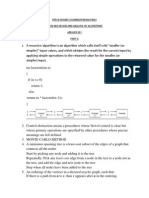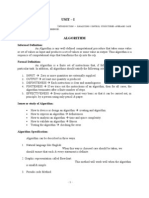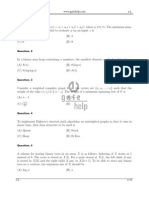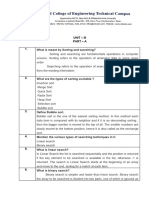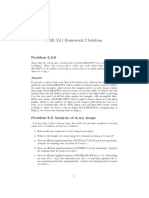0% found this document useful (0 votes)
40 views5 pagesDAA Winter 2023 Model Answers
The document is a model answer sheet for the Design and Analysis of Algorithms course at Dr. Babasaheb Ambedkar Technological University for the Winter 2023 examination. It includes questions on algorithms, asymptotic notation, heaps, binary search, quick sort, Strassen's matrix multiplication, graph coloring, and various optimization problems. Each section provides definitions, algorithms, and performance analyses relevant to the topics covered in the course.
Uploaded by
suvarnapatil19085Copyright
© © All Rights Reserved
We take content rights seriously. If you suspect this is your content, claim it here.
Available Formats
Download as DOCX, PDF, TXT or read online on Scribd
0% found this document useful (0 votes)
40 views5 pagesDAA Winter 2023 Model Answers
The document is a model answer sheet for the Design and Analysis of Algorithms course at Dr. Babasaheb Ambedkar Technological University for the Winter 2023 examination. It includes questions on algorithms, asymptotic notation, heaps, binary search, quick sort, Strassen's matrix multiplication, graph coloring, and various optimization problems. Each section provides definitions, algorithms, and performance analyses relevant to the topics covered in the course.
Uploaded by
suvarnapatil19085Copyright
© © All Rights Reserved
We take content rights seriously. If you suspect this is your content, claim it here.
Available Formats
Download as DOCX, PDF, TXT or read online on Scribd
/ 5















